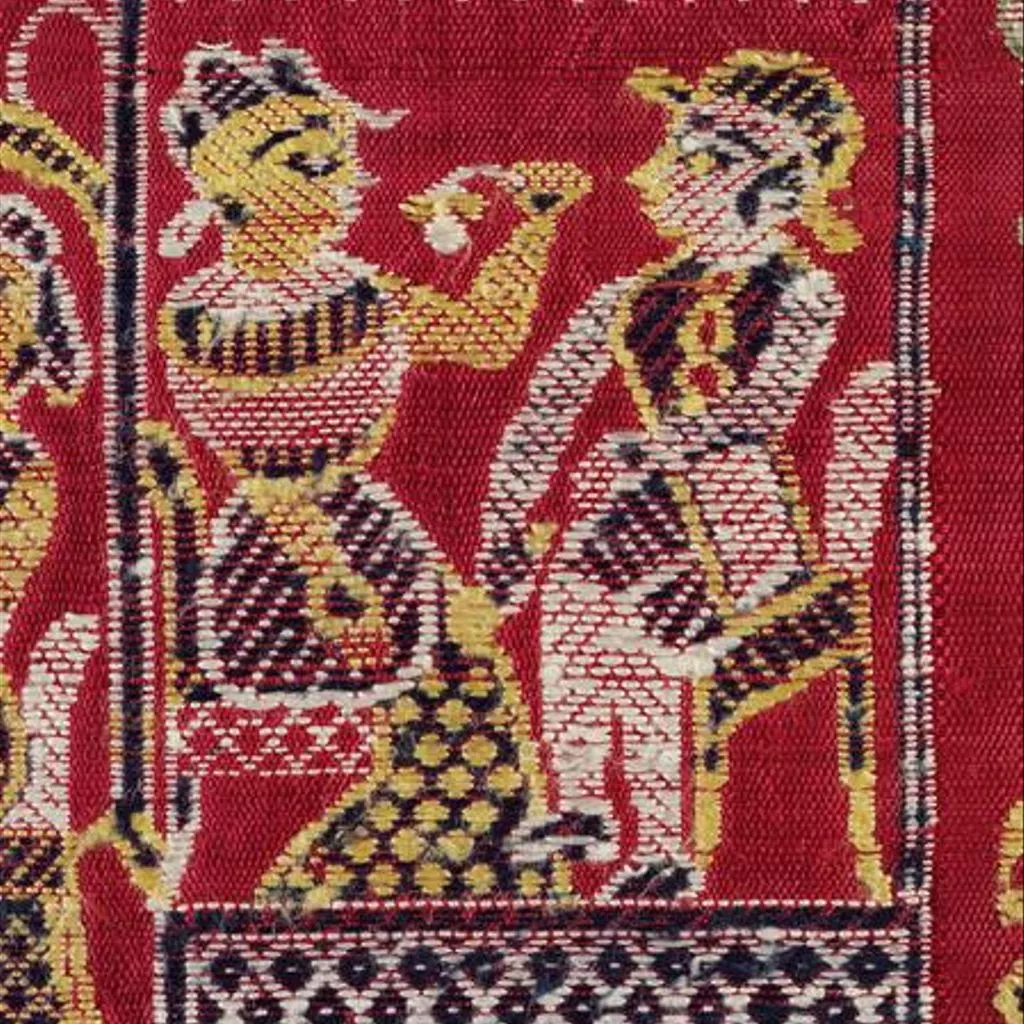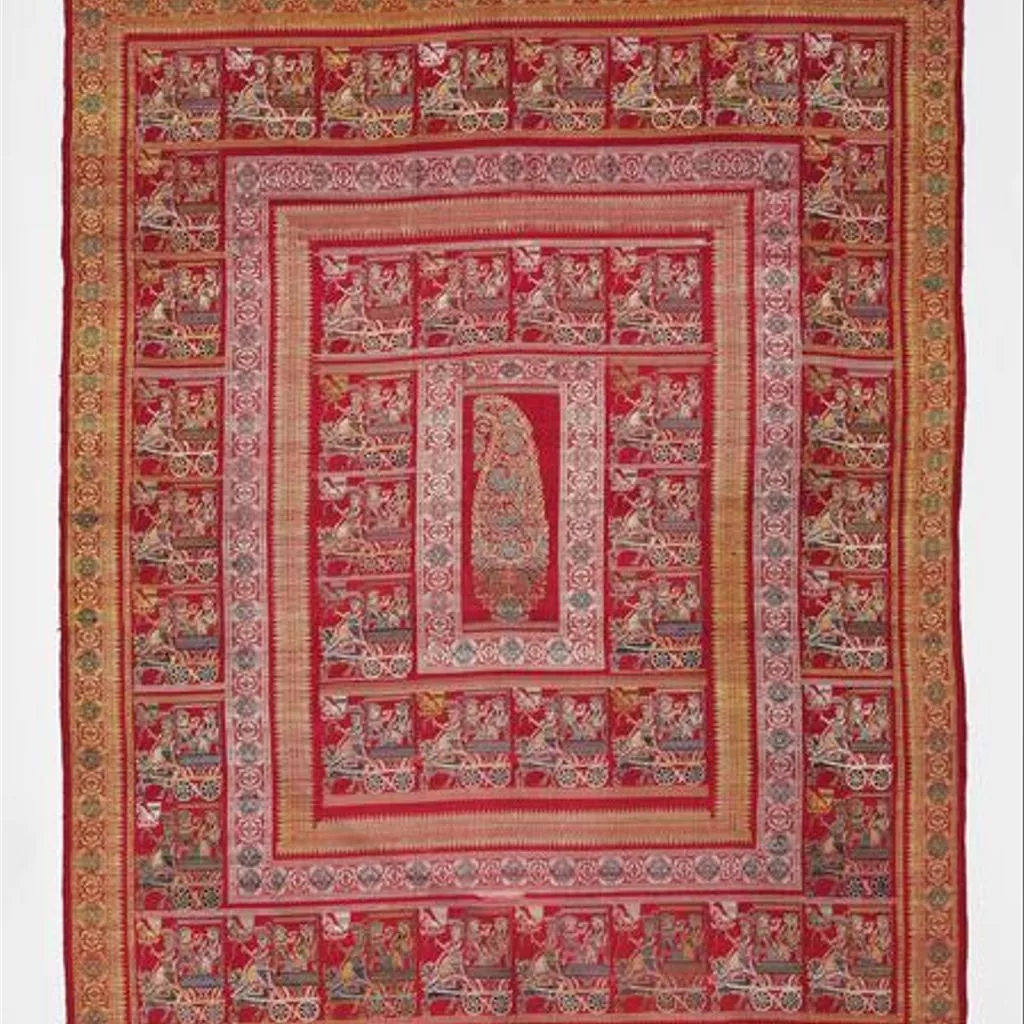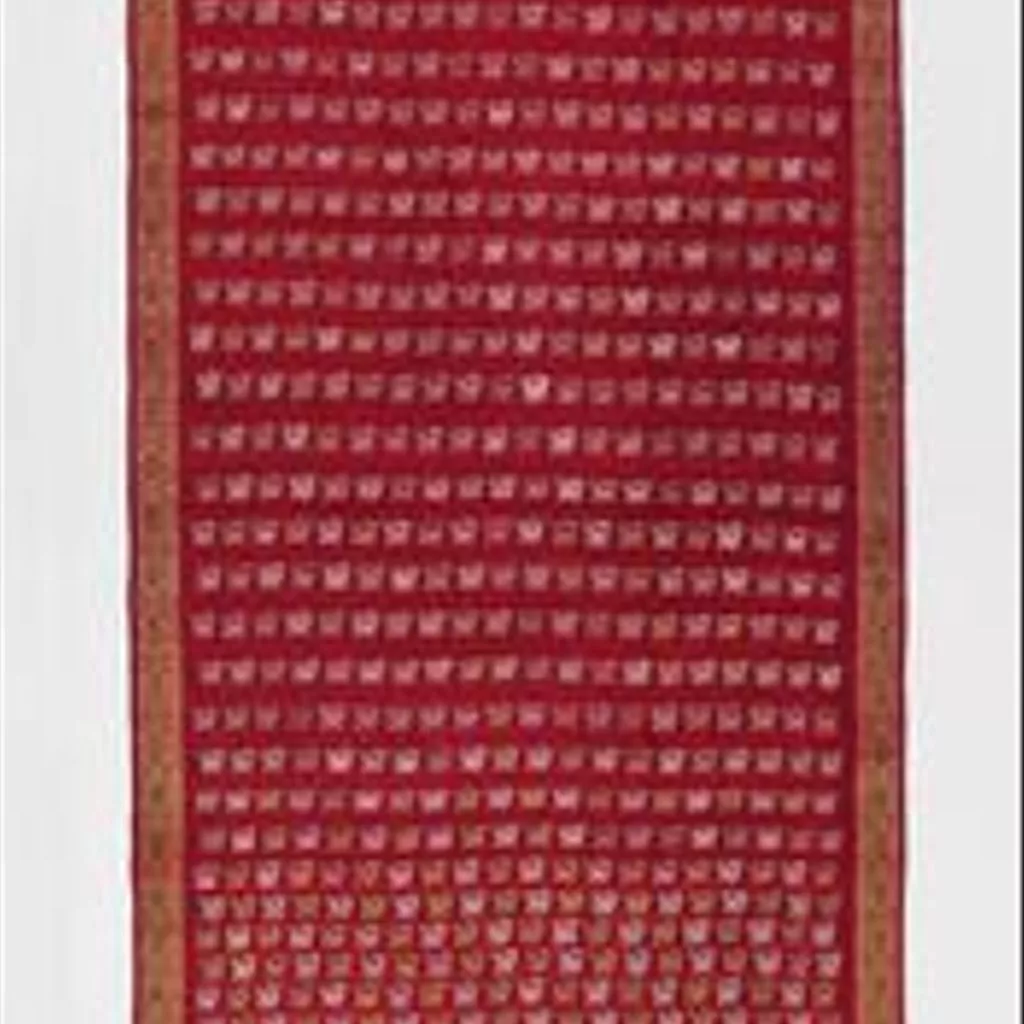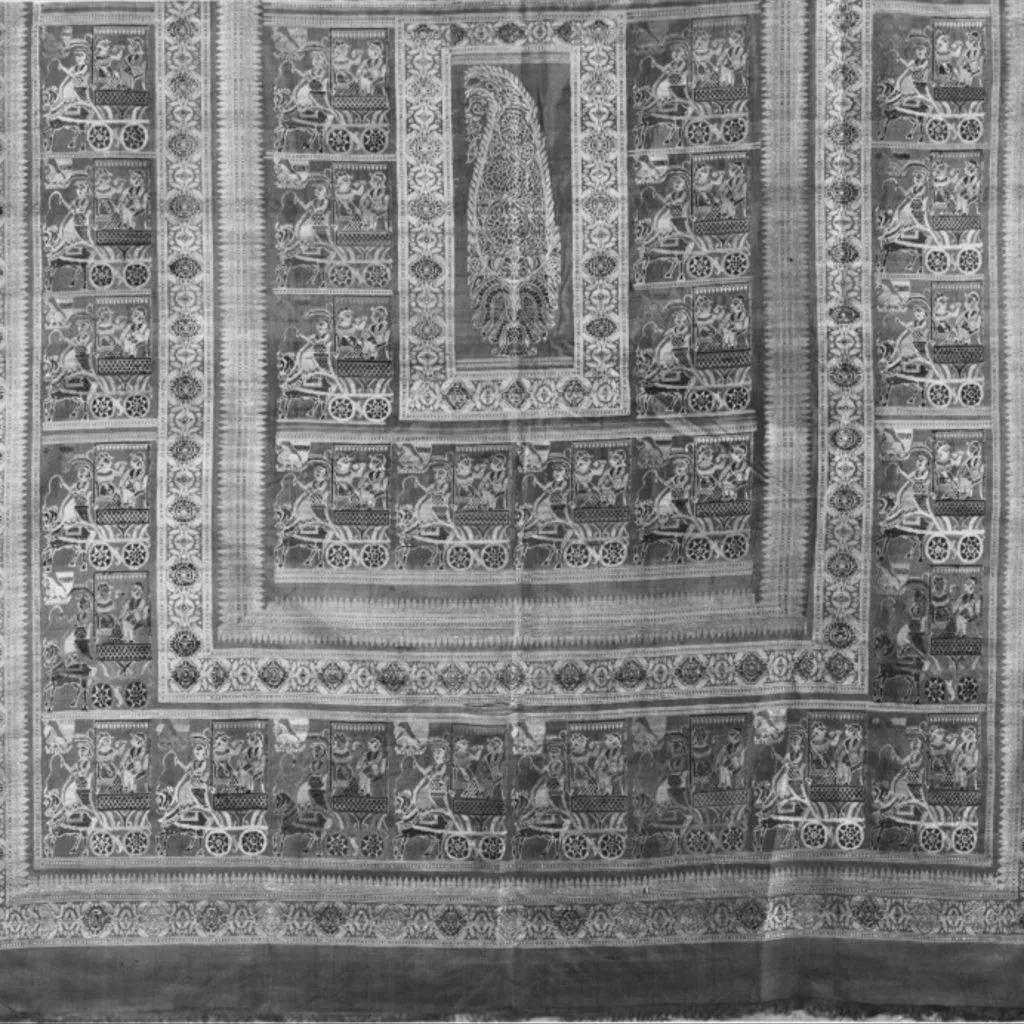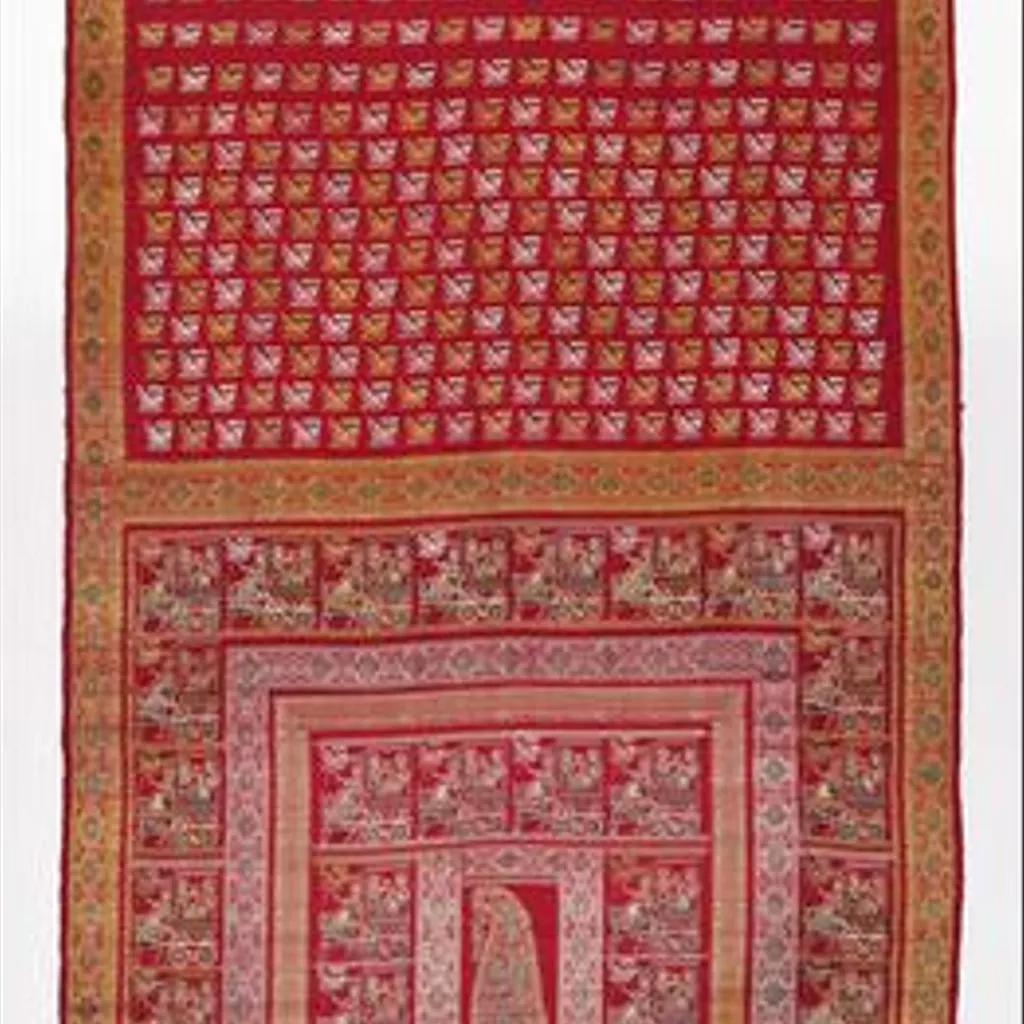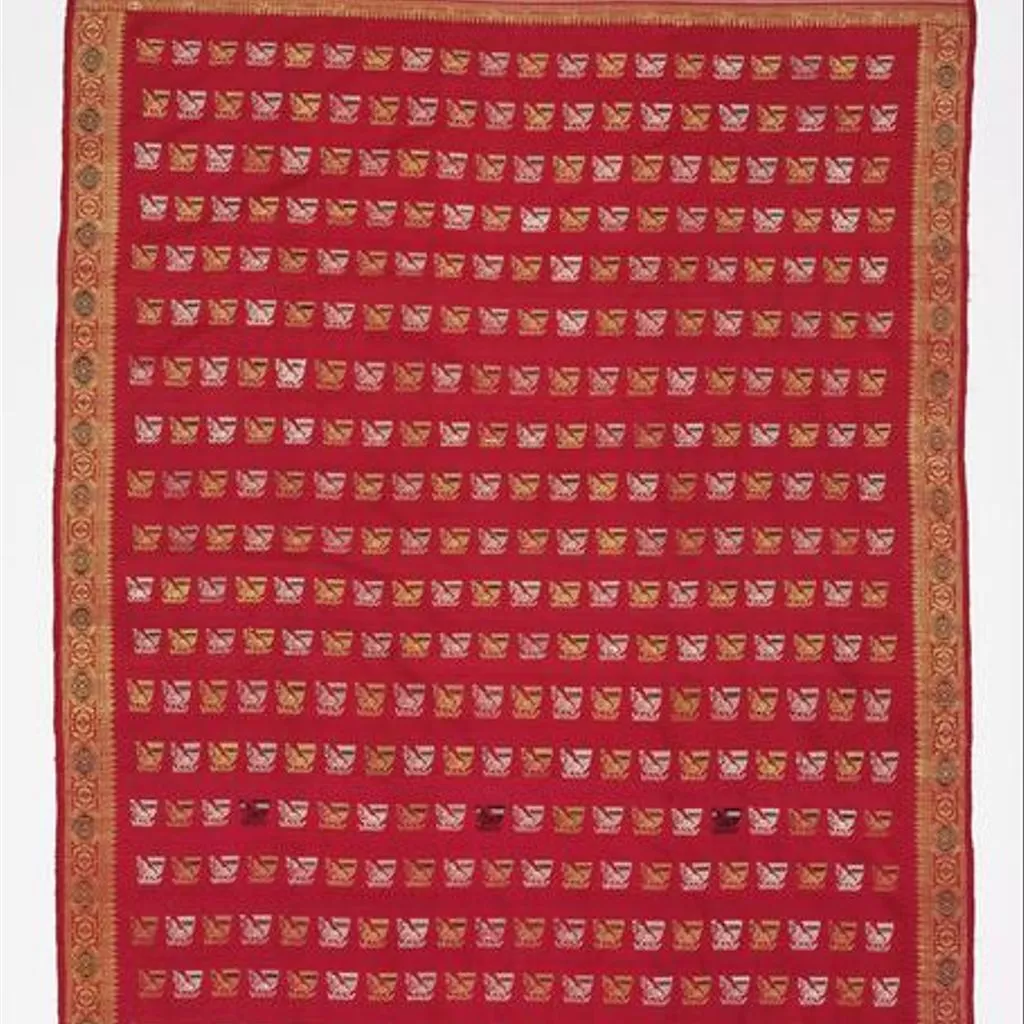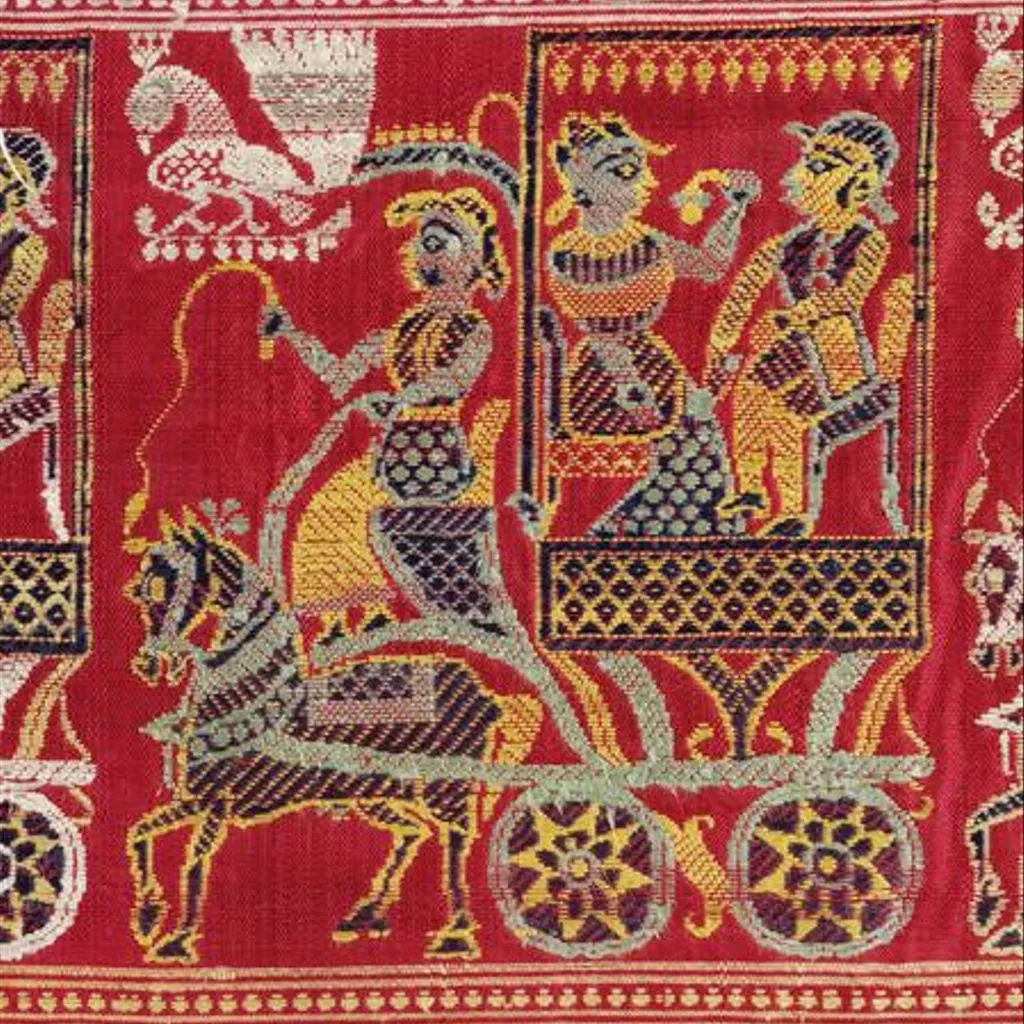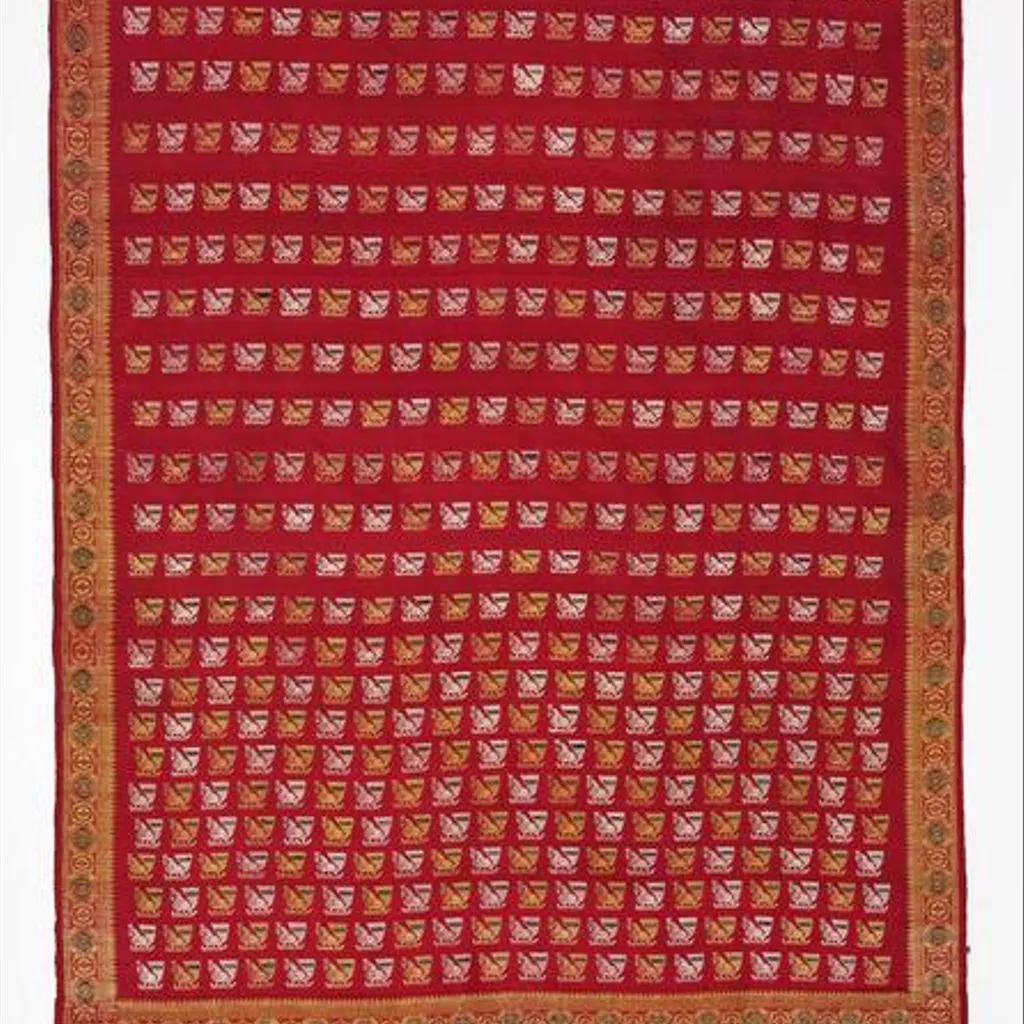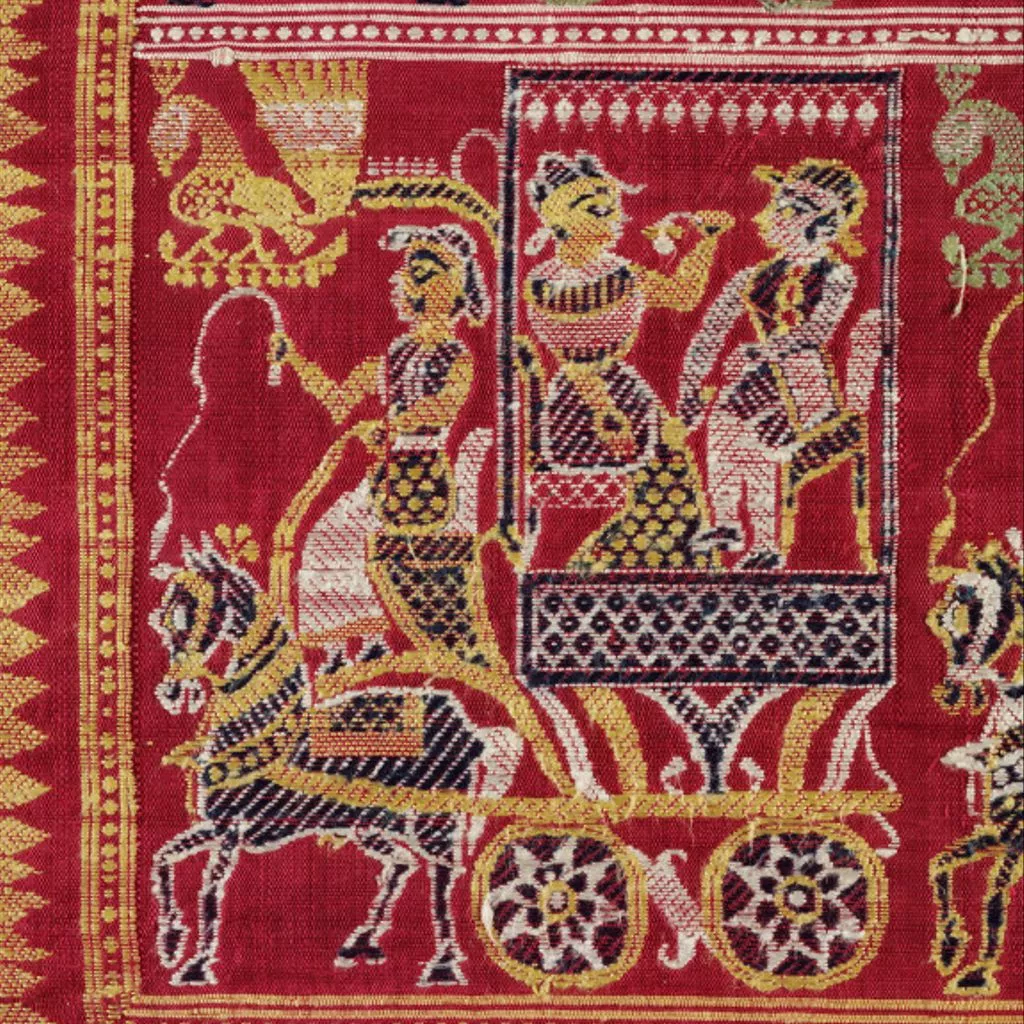Description
Baluchar sari, red silk with patterning in yellow, white and black, pallu (decorative end) design of Europeans in a horse-drawn carriage, Bahadarpur, c.1855; Textiles; Women's Clothes
BALUCHAR SARI
Baluchar saris are unique to West Bengal. The end to be shown (pallu) often uses a repeated pattern of human figures, hand-woven on a draw-loom. The mechanical Jacquard loom later replaced the draw-loom, but collectors prize the tiny imperfections of hand-woven Baluchar saris.
Silk (plain weave with extra wefts)
Bahadurpur, Murshidabad, West Bengal, about 1855
V&A: 6102 (IS) [03/10/2015-10/01/2016]
A woven silk sari with red warp and red weft throughout. The red field is diapered with 'butis' comprising of rows of peacocks in alternate white and yellow with green and black bands on the tail. Both 'pars' (outer borders) and 'anchala' (end) have 'buttis' in stylized flower patterns in green and yellow. The inner borders of red 'anchala' (end) have motifs depicting a European couple seated facing each other in a horse-drawn carriage with a driver holding a whip. The carriage carries a 'mayur-dhvaja' (peacock flag) - a symbol appeared on a chariot in the mythology. The entire motif is repeated to form horizontal and vertical border processions, defined by another border system of repeating rosettes. In the centre of the section there is a 'butti' of 'naksha' (pattern) known as 'kalka' (paisley). The colour scheme of 'anchal' is purple, blue, yellow and white. This type of silk brocade sari is known as 'Baluchar Buttidar' sari.











